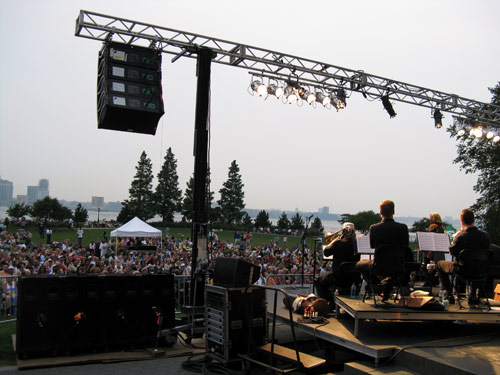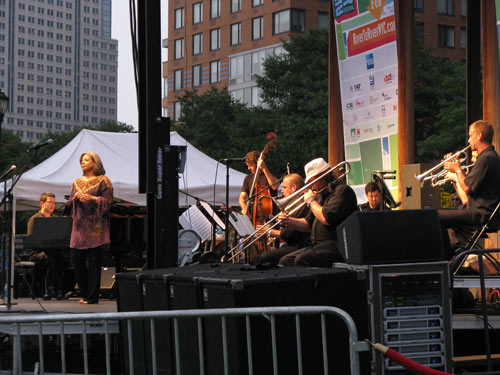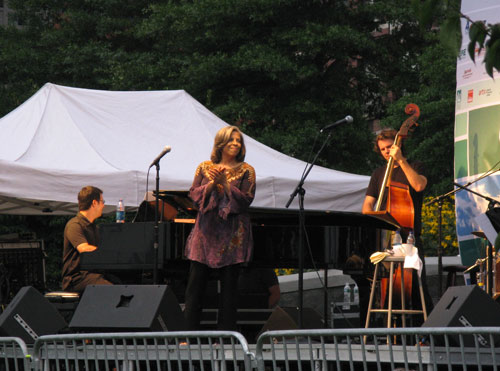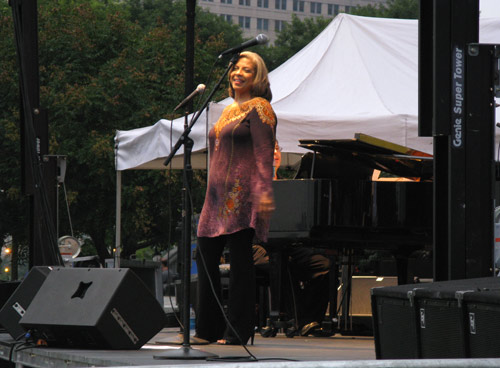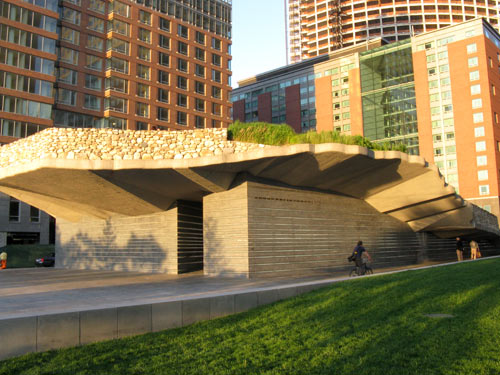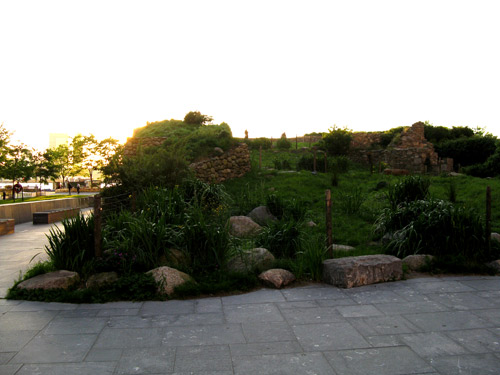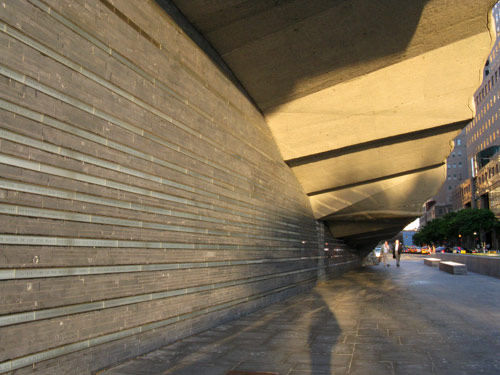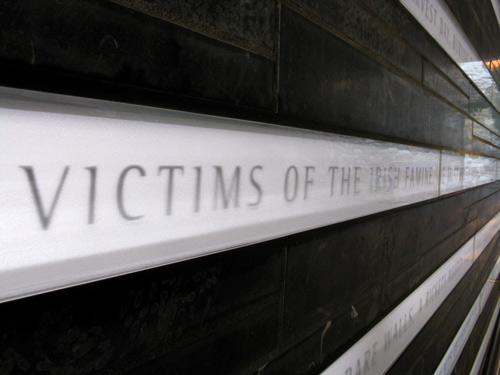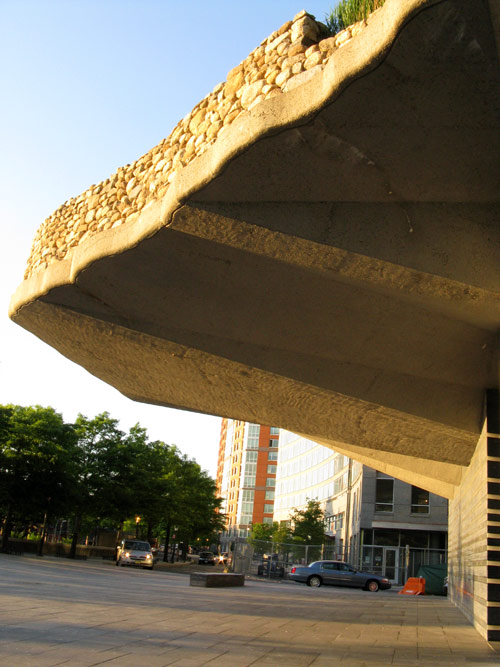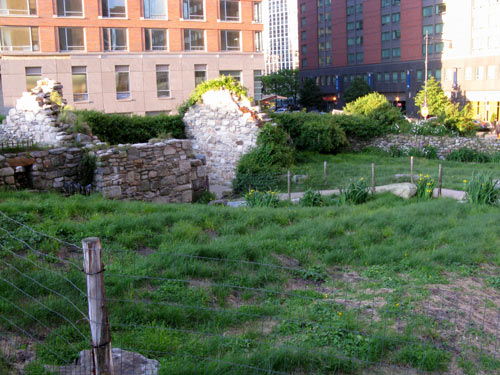Tag: Battery Park
I like a Gershwin tune
In Nelson A. Rockefeller Park at the North end of Battery Park City, where singer Patti Austin was performing the music of George and Ira Gershwin as part of the summer’s River to River Festival.
I grew up on classic studio films and Hollywood musicals, which probably makes me more familiar with the Great American Songbook than my fellow Gen-X and younger cohorts, many of whom associate the songs with cocktail lounges, wedding receptions, and um… movies starring Tom Hanks and Meg Ryan. Nowadays, artists like Peter Cincotti, Michael Bublé and (still, sometimes) Harry Connick, Jr. carry on the torch for a new generation… though I don’t know that their fan bases would be considered particularly youthful.
The GAS was the soundtrack of American life for more than half a century, and pre-1960 recordings abound. In this decade, Rod Stewart recorded four volumes of the Songbook, but my recommendation to those looking for a primer is decidedly more old school than Rod the Mod: Ella Fitzgerald’s Songbooks. All eight of the studio albums comprising the series were re-released as a box set by Verve in 1993.
In February, Austin won the Best Jazz Vocal Album Grammy for her tribute album, Avant Gershwin — 53 years and 16 albums after landing her first record contract at the age of 5. She harbors no ill will for her late-career recognition, though she did publicly thank Elvis Costello for knocking up “that b*tch Diana Krall” (who owns Grammys for both Best Jazz Vocal Album and Jazz Vocal Performance.)
From the stage facing the Hudson, Austin wowed the crowd with jazzed up versions of classics like “I’ll Build A Stairway To Paradise,” “Funny Face,” “They Can’t Take That Away From Me,” and “Our Love Is Here To Stay.”
The man who only lives for making money
Lives a life that isn’t necessarily sunny;
Likewise the man who works for fame —
There’s no guarantee that time won’t erase his name.
The fact is
The only work that really brings enjoyment
Is the kind that is for girl and boy meant.
Fall in love — you won’t regret it.
That’s the best work of all, if you can get it.— “Nice Work If You Can Get It,” George and Ira Gershwin (1937)
A piece of Ireland
It feels good to be home.
To kick off the summer’s River to River Festival, soprano Leah Partridge and tenor Norman Reinhardt performed an evening of operatic arias and duets in Battery Park City’s South Cove.
On my way to the outdoor music recital, I walked by the Irish Hunger Memorial — a striking 1/4 acre plot of land nestled anachronistically among the lower Manhattan skyscrapers, jutting out from the sidewalk at Vesey Street and North End Avenue. The memorial was designed collaboratively by artist Brian Tolle, in association with 1100 Architect and landscape architect Gail Wittwer-Laird. (Factsheet .pdf) Theirs was the winning entry in a 2000 design competition for the site, which was donated by the Battery Park City Authority.
The sloping field looks out over the Hudson from a twenty-five foot pedestal of fossilized Kilkenny limestone and glass, and is dedicated to raising awareness of An Gorta Mór (The Great Hunger), a.k.a. the Great Irish Famine of 1845-1852 that left one million dead and another million and a half uprooted, sparking the first major wave of Irish emigration to the United States. (Hello, Sunnyside.)
Ground broke on the $4.7 million memorial on March 15, 2001; it was dedicated by Governor George Pataki and Governor and President Mary McAleese of the Republic of Ireland in a ceremony on July 16, 2002 — several months late due to the area’s limited access following September 11. The neighborhood is now so crowded with memorials (World War II, The Museum of Jewish Heritage, Ground Zero) that after the Irish Hunger Memorial dedication, columnist Jimmy Breslin dubbed it “Misery Mile” to contrast with Museum Mile uptown.
The exterior wall of the memorial and its interior passageway are lined with almost two miles of text, etched onto illuminated glass and Plexiglas panels: excerpts of bills, notes, letters, statements, songs and reports, recipes, quotations, proverbs and statistics, intended to provoke debate or inspire reflection. The memorial’s 1/4-acre lot represents the maximum-sized plot one could own to still be eligible for any form of government relief under the infamous Gregory Clause that was added to the Poor Law of 1847 — a British land policy which effectively cleared estates for landlords and exacerbated the famine by destroying a way of life for an entire class of small farm laborers in Ireland. Thousands died of starvation rather than relinquish what little they still had.
Wittwer-Laird’s landscape utilizes stones, soil, and some 62 varieties of grasses and wildflowers from fallow potato fields all brought in from the western coast of Ireland. Most strikingly, the memorial incorporates an actual ruined Famine-era stone cottage, donated by distant relatives of the artist, dismantled in County Mayo, and reassembled in downtown New York, minus its modern tin roof.
Ironically, the transplanted ancient materials actually withstood their first New York winter far better than the modern materials used to bind them. After being open for less than a year, the memorial had to be closed for several months in 2003 for emergency repairs.
Flickr preview: a Jazz Age Lawn Party on Governors Island (Sunday, June 8, 2008)
| S | M | T | W | T | F | S |
|---|---|---|---|---|---|---|
| 1 | 2 | 3 | 4 | 5 | ||
| 6 | 7 | 8 | 9 | 10 | 11 | 12 |
| 13 | 14 | 15 | 16 | 17 | 18 | 19 |
| 20 | 21 | 22 | 23 | 24 | 25 | 26 |
| 27 | 28 | 29 | 30 | 31 | ||
Search
Popular Tags
Categories
Archive
- July 2010
- July 2009
- January 2009
- November 2008
- September 2008
- August 2008
- July 2008
- June 2008
- May 2008
- April 2008
- March 2008
- February 2008
- January 2008
- December 2007
- November 2007
- October 2007
- September 2007
- August 2007
- July 2007
- June 2007
- May 2007
- April 2007
- March 2007
- February 2007
- January 2007
- December 2006
- November 2006
- October 2006
- September 2006
- August 2006
- July 2006
- June 2006
